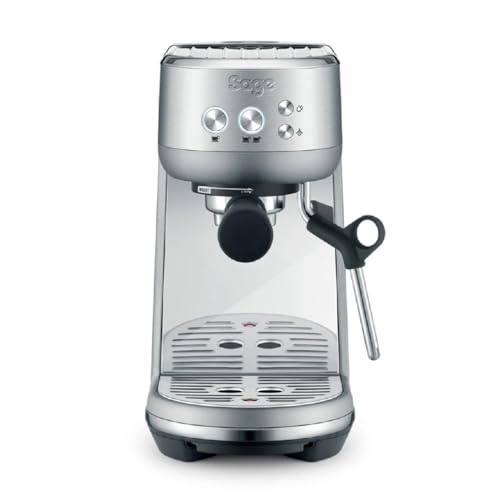How to Make Espresso Machine Coffee
An espresso machine can make delicious cups of coffee, but it needs some extra set-up and upkeep than a typical drip coffee maker. You also need to grind and tamp the beans by yourself.
The key to making espresso is pressure. How an espresso machine works is that heating vessels heat the water to the ideal temperature, and then pushes it out of the spouts and into the grounds.
Temperature
Espresso is made by forcing hot water, under pressure, through finely ground coffee beans. The temperature of the water is vital to the quality of the final shot. Insufficient temperatures cause lack of flavor compounds. The high temperatures cause excessive extraction and can lead to a bitter or burnt taste.
The ideal temperature for espresso is between 195 and 205degF. This temperature can be achieved by using an espresso group head that has been designed to ensure the stability of temperature and maintain a constant temperature throughout the brewing process. The most sought-after type of group head is the E61 that provides a combination of temperature stability with pre-infusion and lever control.
When making adjustments to the espresso machine for different roasts and brew ratios, it is important to consider the effect of temperature on extraction yield as well as crema. The optimal temperature will depend on the particular roast and beans, but the general rule is that lighter roasts and greater ratios of brews require higher temperatures than darker roasts and lower ratios of brew. In addition, a top thermocouple of good quality is essential in ensuring a consistent temperature.
Pressure
When brewing, espresso machine coffee is pushed under pressure through finely ground coffee grounds that have been stamped. This triggers chemical reactions that remove flavors, oils and other soluble components. The drink that is produced is typically richer and more flavorful.
The ideal espresso machine pressure should be nine bar, which is equivalent to the pressure of the ocean at sea level. This is because it's at this pressure that the espresso bean's soluble compounds are the easiest to extract.
Some espresso machines boast up to 20 bars of pressure. While these machines may attain these levels of pressure however, they may not be capable of maintaining the pressure level throughout the extraction.
To put that in perspective, one bar of pressure equals 32 pounds per square inch PSI of a car tire. It's more than four-times the pressure that a professional cyclist applies to their bicycle tires. Every serious home barista needs to be able control the pressure of their espresso machine and produce consistent espressos.
Water
The water you use in your espresso machine is one of the most important aspects that make a good cup coffee. The correct water will assist your beans in reaching their full potential. Using the wrong type of water can cause issues such as blocked pipes or even harm your expensive espresso machine.
The best choice is a natural spring water that is high in minerals for optimal espresso extraction. Coffeee will enhance the taste of your espresso without the chalky mineral traces that are found in tap or bottled waters. This is an excellent alternative to distilled water or reverse osmosis. This process can be too pure and cause problems with flavor.
But, you shouldn't use water filters that remove excessive minerals from your tap water because this could cause problems with flavor and extraction. Buy a water testing kit to determine the average hardness of your local water. This information can be used to determine the best filtration system for your espresso machine.
Beans
The majority of coffee drinkers tend to be involved in the process of making espresso. They ponder a myriad of variables, including temperature, water pressure, beans, milk, viscosity, and other factors. If one variable is not working, even a little, the entire shot could taste bad.
The beans used are the most important element when it comes down to espresso. Many people believe that only certain types of beans work well for espresso. While certain beans are suited for certain purposes but any bean that is roasted can be used for espresso. The main difference between espresso beans and regular coffee beans is that espresso beans are roasted longer in tipycally, well past the second crack, which gives them a darker appearance and makes them more soluble in water.
The best espresso beans are typically medium roasted or dark roasted. This gives the espressos their distinctive richness and vigor. Light roasted beans can also be used to create great espresso, especially when they're pre-ground to make it easier for an espresso maker.
Milk

Espresso and milk are a traditional combination. Not only does the coffee increase energy levels, but the steaming milk helps to offset the bitterness of the espresso and also adds a wonderful creaminess. This is one of the best culinary pairings!
If you choose to buy an espresso machine that can make cappuccino or latte make sure to take a look at how simple it is to use. A lot of the top espresso machines come with an ice jug that can be filled with hot or cold milk along with a steam wand and an espresso portafilter to pull the shot. Some models come with a built-in grinder, tamper and frother.
The steam wand needs to be cleaned prior to using it for the first time in a day (or after every cup of espresso) to get rid of any water that has condensed. This process only takes 30 seconds, but it's vital to keep your machine running smoothly. Inability to purge could cause a bitter taste or build-up of bacteria which can alter the flavor and smell of your drinks. It's simple to do and should be a part of your regular maintenance routine.
